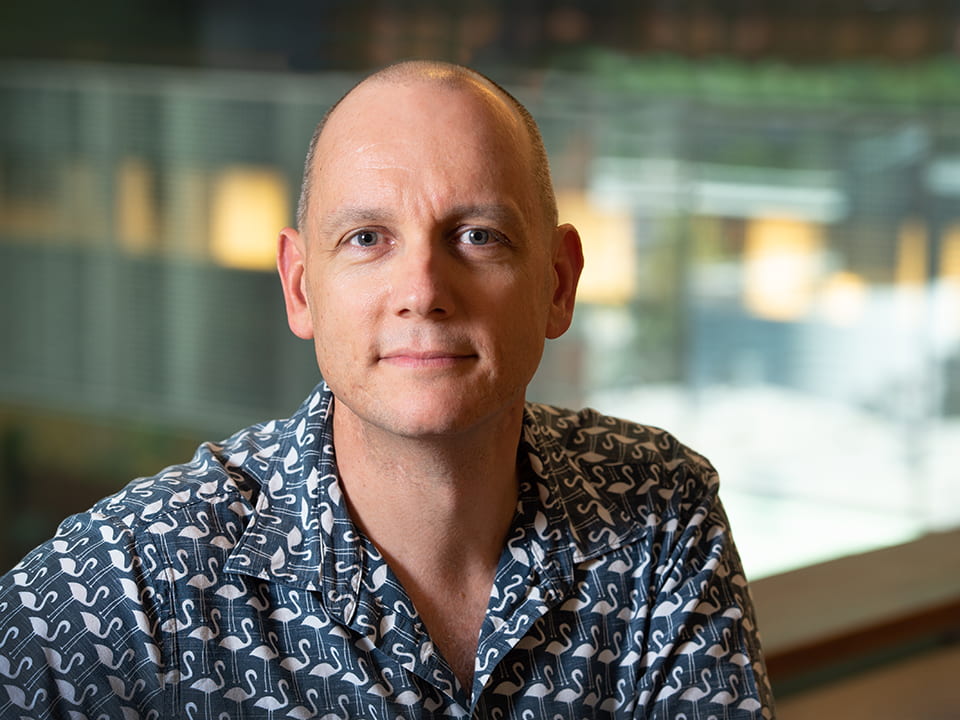'The laws in biology are yet to be discovered, and fundamental questions are yet to be addressed. I use mathematical models to improve our understanding of cell biology.'


The spark
'When I finished high school, I wasn't sure what I was going to study. I knew I loved mathematics but I didn't know anyone who was a mathematician, or even that you could get a job as a mathematician. I ended up studying engineering and discovered I don’t always like doing experiments, but I like thinking about data and measurements and observations.'
Research aim
'I moved from civil engineering to mathematical biology. Engineering, like physics, is based on well-accepted, fundamental laws, such as laws of motion. These laws in biology are yet to be discovered, and fundamental questions are yet to be addressed.
'I use mathematical models to improve our understanding of cell biology. Experimental cell biology is not reproducible – meaning that complicated, expensive experiments cannot always be repeated reliably - and the reproducibility crisis is associated with massive economic, human and scientific costs. We aim to solve the reproducibility crisis through integrating mathematical models, and mathematical modelling, to aid experimental design and interpretation. Ultimately, this will transform experimental cell biology into a quantitative, reproducible scientific discipline.'


Real-world implications
'The COVID pandemic has made a wider group of people aware of mathematical biology. There are models that I teach to my second-year undergraduates that takes a population and divides them into people who are susceptible, people who are infected, and people who have recovered or died. That’s an area of mathematical biology that people are aware of now.'
The challenge
'The grand challenge for mathematical biology is to provide the research tools and research culture that will transform experimental cell biology into a quantitative, reproducible scientific discipline. Mathematical models, and mathematical modelling are embedded in physical sciences, such as materials science and fluid mechanics. In these disciplines, mathematical models are used to design and interpret experiments, and ultimately to enhance our understanding of fundamental principles. This transformation is yet to happen in cell biology.'


Teaching
'I train research students to work across multiple disciplines, tackling problems at the interface of applied mathematics, applied statistics, and experimental biology. This approach to mentoring future researchers is very fruitful, with students from my group making exciting, fundamental scientific discoveries, and then going on to hold a range of positions in academia and industry.'
Key collaborators
'Collaboration is everything. Key discoveries are made at the intersection of scientific disciplines and applied mathematicians are explicitly trained to work at the interface between disciplines.'
- University of Queensland
- Translational Research Institute
- University of Oxford
- University of Canterbury
- University of Auckland
- University of Melbourne
Key publications
Simpson Matthew J., Baker Ruth E., Vittadello Sean T. and Maclaren Oliver J. (2020). Practical parameter identifiability for spatio-temporal models of cell invasion J. R. Soc. Interface.1720200055 http://doi.org/10.1098/rsif.2020.0055
ST Vittadello, SW McCue, G Gunasingh, NK Haass, MJ Simpson (2020). Testing go-or-grow using fluorescent cell-cycle indicators and cell-cycle-inhibiting drugs. Biophysical Journal. 118, 1243-1247. https://www.cell.com/biophysj/fulltext/S0006-3495(20)30111-9
DJ Warne, RE Baker, MJ Simpson (2019). Simulation and inference algorithms for biochemical stochastic reaction networks: from basic concepts to state-of-the-art. Journal of the Royal Society Interface. 16, 20180943. https://doi.org/10.1098/rsif.2018.0943
Centre for Data Science
Professor Simpson is co-leader of the Models and Algorithms theme in the Centre for Data Science.

